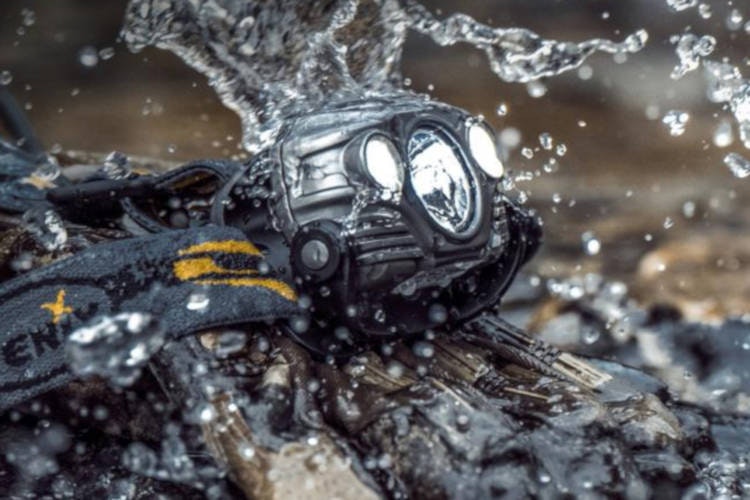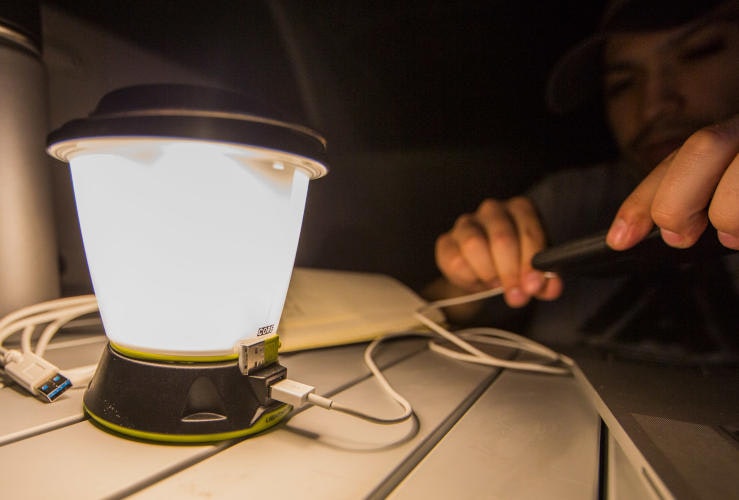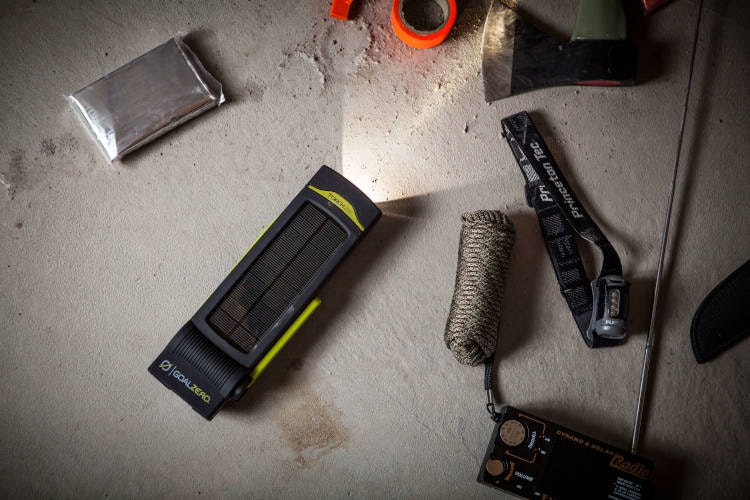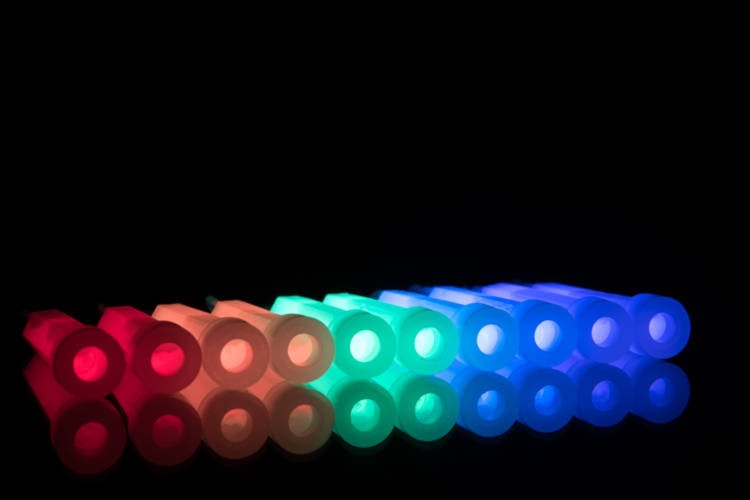We probably don’t know anyone foolish enough to sail without a reliable light source. By law, a ship must be illuminated at night, whether it is moving or anchored. You will also be happy to be able to see what you're doing on board and below deck. What are the options available today? A wide range.
Head torches, torches, lanterns, and other lighting for holidays at sea
Head torches
Not so long ago, head torches were not entirely possible. Or maybe they were, but you wouldn't have wanted to wear them. The fact that we have such a variety of them today is due to human progress in two fields - LEDs and batteries. Both classic and unorthodox light bulbs performed poorly, shone dimly and were far too energy intense to consider the idea of placing them on the middle of your forehead. Modern LEDs consume less and shine more. Some even more than your car’s high beam. Today, we are blessed with diodes whose increased performance has been a major breakthrough. The efficiency of light-emitting diodes has increased roughly fourfold over the past 15 years and is now up to 20 times more efficient than conventional light bulbs.

"Over the last ten years, the performance of head torches has increased dramatically. What a large torch measuring over 20 centimetres and weighing half a kilo was doing ten years ago is that which a small pocket torch weighing up to 100 grams does today. Conversely, over 10,000 lumens are available in today's larger hand torches. Just imagine: a normal 100-watt light bulb has a luminous flux of 1,300 lumens,” says David Grešák of the specialized Kronium.cz store.
The energy requirements of lamps are increasingly covered by today’s batteries. Classic AA batteries and their smaller counterparts are in decline. Disposable batteries don’t make much sense anymore, and because of their size, nor do their rechargeable equivalents.
Jiří Mařan a specialist at the company, Jiří Lumilogic says: “Today's modern Li-ion batteries outperform older NiMH batteries in all parameters, especially disposable ones. The Li-ion can handle multiple higher discharge currents, is half the weight and does not suffer from such disadvantages as latent self-discharge and capacity loss.”
It pays not to budget too much here. You can obtain a head torch at very little cost on any street corner, but it is no wonder that they will not last long.
“Objectively, I have to say that it really pays to invest in a higher quality lamp. At critical moments, this investment may not just reassure you, but could just save your life.” confirms Radomír Klofáč, naval captain and founder of the MORIS company.
A head torch will enable us to illuminate everything we face, while at the same time freeing our hands. Some head torches can also be converted into improvised lanterns or stationary lights. Shortly, we shall present you with yachtsmen’s particular reviews of the most popular models.
WHERE TO USE THESE HEAD TORCHES:
During night crossings, while trimming sails or performing other small tasks on deck or even below deck in case we’d like to save the boat’s circuit battery. And they will surely be useful when exploring caves in dinghys and alike. One great advantage is that your head torch can emit red light which does not dazzle others on board, is not damaging to the human eye and apparently does not attract insects.
LANTERNS
Lanterns are going through a renaissance thanks to the technology mentioned above. Although nowadays, they do not operate on kerosene (therefore you will not accidentally ignite your yacht), they still have their place on board. Because they shine in all directions at a short distance, they can run continuously for dozens of hours. Many offer a powerbank for emergency charging of mobile phones, and include the option of switching to other colours or multi colours. The benefits of red have already been mentioned. Green light also has benefits, because you can alternate it with positional (red / green) or mast (white / red) lights in the event of a blackout.

WHERE TO USE LANTERNS:
Wherever a certain space such as a cockpit, saloon, deck or individual cabin requires light for lengthy periods of time. Even smaller lanterns can stay in use every night for several weeks without having to be recharged. So a quality durable lantern is an irreplaceable component of your "service" bag containing all the items required for technical navigation. It is a not so unusual occurrence that a lantern has prevented a yacht from colliding with a cargo ship at night.
HAND TORCH
The standard torch or flashlight is designed mainly for manual use. It delivers streamlined light over a distance of several hundred metres and may be packed with extra features. Adjusting the brightness or width of the light beam is fairly commonplace. Nowadays, torches can be converted into lanterns or head torches. In addition, they can be equipped with solar energy rechargers or even emergency hand crank handles to name but two possibilities.
"Torches make it easy to focus and diffuse the light cone - zoom - or operate with a single smart button. Some torches, thanks to new technology, will adapt themselves to the surrounding light conditions so that they do not dazzle whilst providing sufficient light. Most torches possess a pre-programmed crisis mode which emits an SOS signal.” says Jiří Hubička representative of Ledlenser.cz.
When considering torches, it is good to check for sufficient water resistance and dust protection (IPXX). IP69 certification guarantees total dust protection (the first number) and high pressure water resistance (the second number). The higher the figure, the higher the protection. IP69 is the highest possible combination. Also, a certified impact resistance is important when on board. This ranges from 1-2 metres when impacting on any surface, which is generally sufficient for sailing. These are scientifically proven measurements for certification. In practice, the torch will endure much more and some models survived being thrown from a third floor window onto concrete during tests. Except for minor scratches, these test models are still in use to this day. In bad weather, you will also appreciate a good "grip", ie the ability to grip the torch with wet hands or gloves and not let go.
WHERE TO USE HAND TORCHES:
Especially for illumination up close and during tasks that do not require the use of both hands. It comes in useful in a marina while looking for toilets or encountering a thief trying to steal a recharge cable in the dark of night. As moisture is higher by the sea, it may happen that you can’t see anything in dense fog without the aid of a proper torch with a concentrated beam of light.
INDUSTRIAL LIGHT STICKS
TIndustrial light sticks are very popular not only with sailors. A plastic tube is filled with two fluids that interact after activation, and this reaction emits light. They last for a long time, with the intensity of the luminous flux slowly fading. Usually the sticks can supply enough light for 12-24 hours. They are available in a range of colour variations and in several sizes. They usually have a hook for hanging and a hole for tying. They are almost unbreakable and can withstand rough handling without difficulty. But once activated - they can never be switched off. The reaction is irreversible, the stick cannot be used again.

WHERE TO USE INDUSTRIAL LIGHT STICKS:
Due to their nature, they suit even the most demanding situations, or you can just light a deck with them. The light is not as intensive as from a lamp, but is sufficient for many situations. Malfunctioning navigation lights can be temporarily replaced by combining red and green light sticks. (However, be careful! The light intensity of the stick does not reach the required norms, so this is really just for emergency situations.) Unlike almost all other light sources, these sticks float and can therefore be used in many adverse conditions.
And how to choose the right torch?
The main parameters to be considered are performance, battery life and durability. It is good to have at least three modes available: roughly 50 lumens for standard work, 100-300 lm for full clarity and "high beams" in case the light required needs to operate as standard ship lighting, or you may be fishing in darkness, or perhaps exploring a cave. 1000 lm or more suits these situations.
Whichever torch you choose, always have a backup plan - a spare battery and the possibility of alternative battery recharging. Do not underestimate the importance of your torch’s durability, you'll see it's an investment that prevents much trouble and grief.
Are you the owner of a new torch that requires testing at sea? Choose your dream boat easily here, haul anchor and sail day and night!